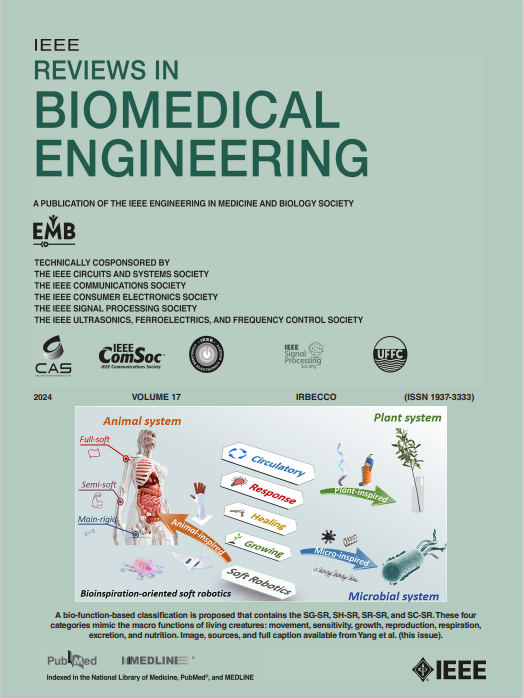Artificial General Intelligence for Medical Imaging Analysis
IF 17.2
1区 工程技术
Q1 ENGINEERING, BIOMEDICAL
引用次数: 0
Abstract
Large-scale Artificial General Intelligence (AGI) models, including Large Language Models (LLMs) such as ChatGPT/GPT-4, have achieved unprecedented success in a variety of general domain tasks. Yet, when applied directly to specialized domains like medical imaging, which require in-depth expertise, these models face notable challenges arising from the medical field's inherent complexities and unique characteristics. In this review, we delve into the potential applications of AGI models in medical imaging and healthcare, with a primary focus on LLMs, Large Vision Models, and Large Multimodal Models. We provide a thorough overview of the key features and enabling techniques of LLMs and AGI, and further examine the roadmaps guiding the evolution and implementation of AGI models in the medical sector, summarizing their present applications, potentialities, and associated challenges. In addition, we highlight potential future research directions, offering a holistic view on upcoming ventures. This comprehensive review aims to offer insights into the future implications of AGI in medical imaging, healthcare, and beyond.用于医学影像分析的人工通用智能。
大规模人工通用智能(AGI)模型,包括 ChatGPT/GPT-4 等大型语言模型(LLM),在各种通用领域任务中取得了前所未有的成功。然而,当这些模型直接应用于像医学影像这样需要深入专业知识的专业领域时,却面临着医学领域固有的复杂性和独特性所带来的显著挑战。在本综述中,我们将深入探讨 AGI 模型在医学影像和医疗保健领域的潜在应用,主要关注 LLM、大型视觉模型和大型多模态模型。我们全面概述了 LLMs 和 AGI 的主要特征和使能技术,并进一步研究了指导 AGI 模型在医疗领域发展和实施的路线图,总结了它们目前的应用、潜力和相关挑战。此外,我们还强调了未来潜在的研究方向,为即将到来的风险投资提供了一个全面的视角。本综述旨在深入探讨 AGI 在医学成像、医疗保健等领域的未来影响。
本文章由计算机程序翻译,如有差异,请以英文原文为准。
求助全文
约1分钟内获得全文
求助全文
来源期刊

IEEE Reviews in Biomedical Engineering
Engineering-Biomedical Engineering
CiteScore
31.70
自引率
0.60%
发文量
93
期刊介绍:
IEEE Reviews in Biomedical Engineering (RBME) serves as a platform to review the state-of-the-art and trends in the interdisciplinary field of biomedical engineering, which encompasses engineering, life sciences, and medicine. The journal aims to consolidate research and reviews for members of all IEEE societies interested in biomedical engineering. Recognizing the demand for comprehensive reviews among authors of various IEEE journals, RBME addresses this need by receiving, reviewing, and publishing scholarly works under one umbrella. It covers a broad spectrum, from historical to modern developments in biomedical engineering and the integration of technologies from various IEEE societies into the life sciences and medicine.
 求助内容:
求助内容: 应助结果提醒方式:
应助结果提醒方式:


